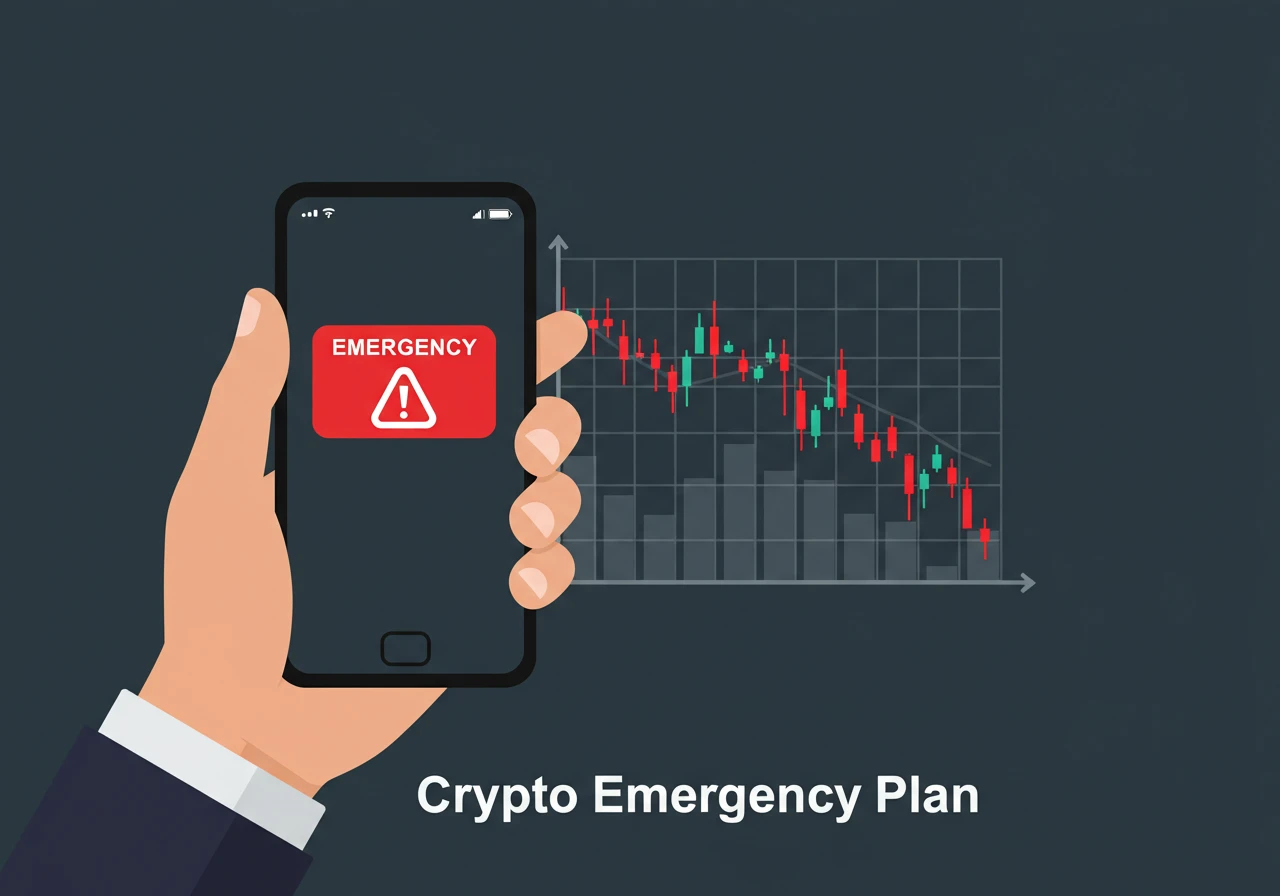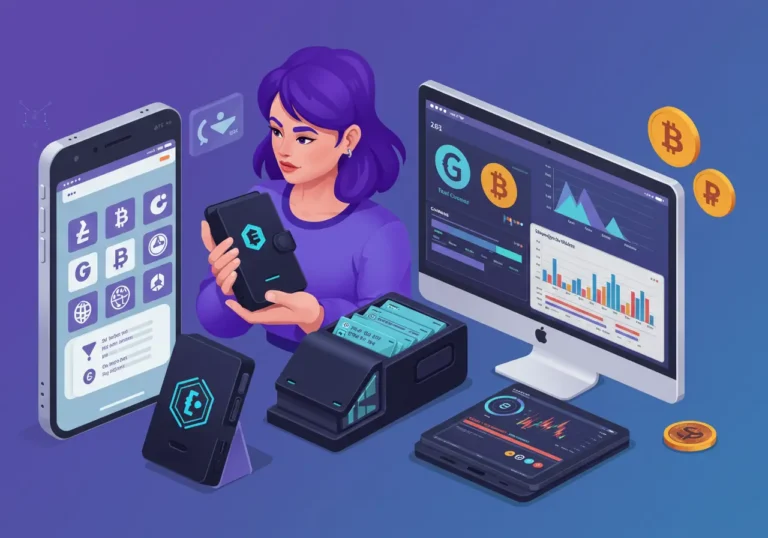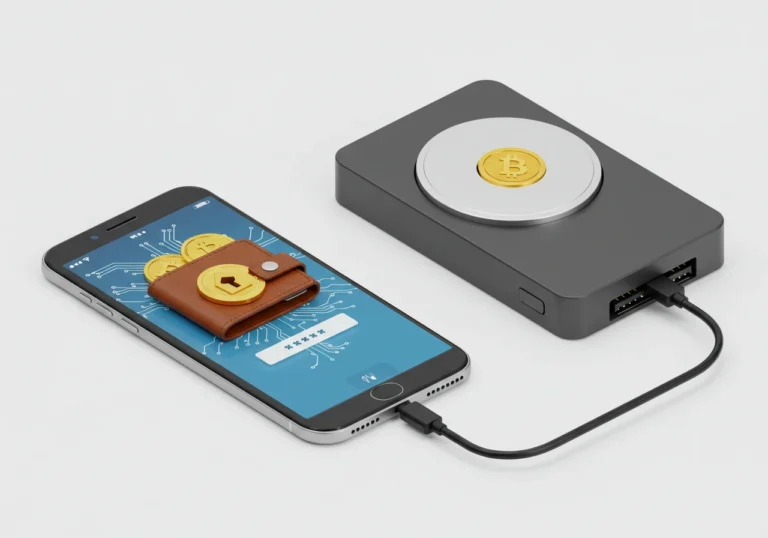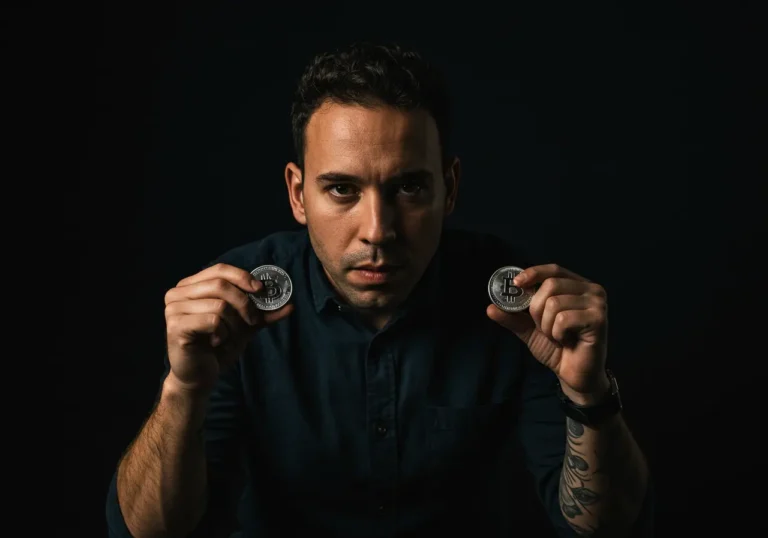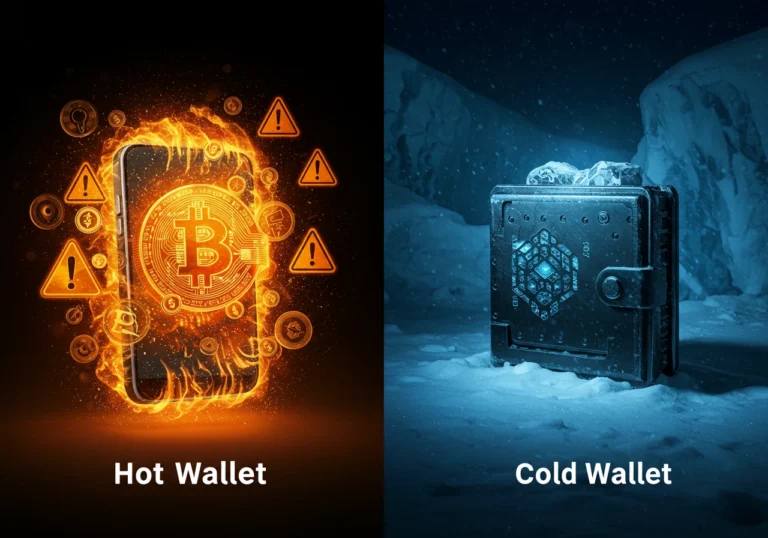How to Create an Emergency Plan for Your Crypto Assets
Hey guys, this article will teach you how to make a practical emergency plan for your crypto.
Emergency Plan — that phrase may sound formal. But here it will mean a short, clear set of steps you and a trusted person can follow if you suddenly cannot access your crypto. The goal is not to create a giant legal file. The goal is to keep your assets safe and make sure the right person can act when really needed.
Why you need a crypto asset emergency plan
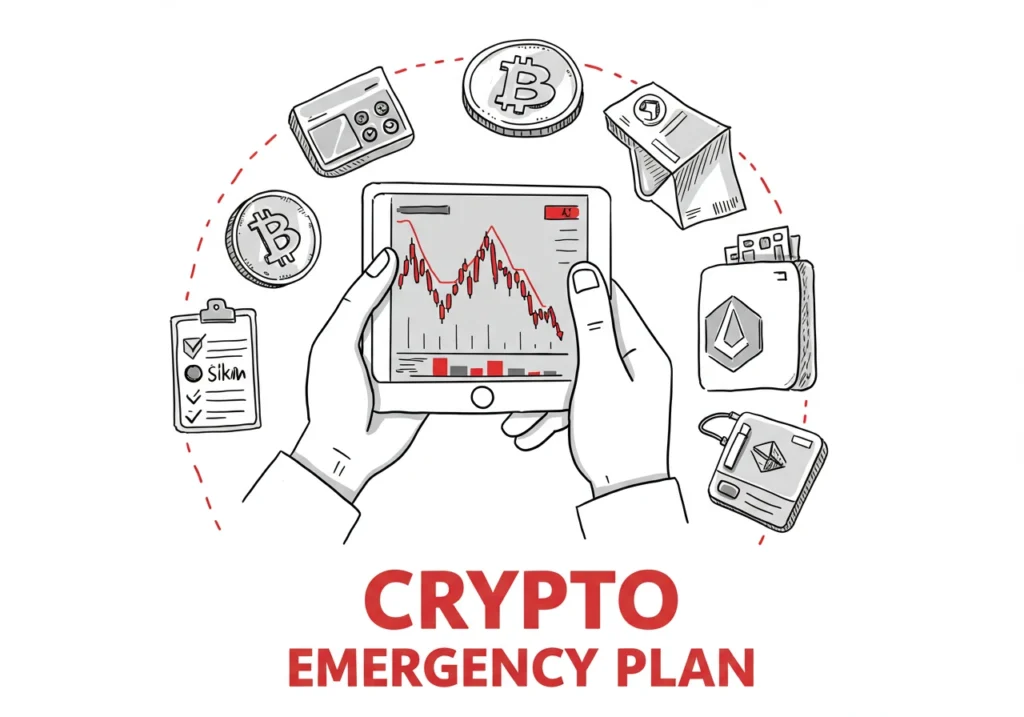
Cryptocurrency is digital. That gives it power and responsibility. A lost password, a stolen phone, or a sudden illness can make access impossible. Unlike banks, crypto does not have a central office to reverse a transfer. That makes cryptocurrency risk management a personal task.
A crypto asset emergency plan means you decide now what to do later. You write down clear instructions. You choose who should help. You make sure access can be recovered without giving away everything to the first stranger who asks.
Start with simple goals
Before tools and backups, ask two plain questions:
- Who will act for me if I cannot?
- What information do they need to act safely?
Answering these two keeps the plan focused. Your emergency plan should let a trusted person recover funds if needed. But it should also stop anyone else from taking them.
Build your emergency team
Pick one or two trusted people. These can be family members, a close friend, or a professional you trust. Tell them what to expect. Practice a short walk-through so they know your voice and instructions. Use people who are steady and calm.
Consider also a digital-savvy person if your team lacks technical experience. That could be a lawyer, a fiduciary, or a trusted friend who understands wallets.
Inventory your crypto assets
Make a simple list. Keep it short and clear. Include:
- Wallet type (hardware, software, exchange)
- Coins/tokens and rough amounts (optional)
- Where keys or seed phrases are kept (do not write the phrases directly in the list unless encrypted)
- Important accounts (exchanges, custodial services) and recovery email addresses
Label each item plainly so your emergency person can follow the steps. The inventory is a map. Keep it updated.
Secure storage solutions for keys and phrases
Choose secure storage solutions for private keys and seed phrases. Here are common options, explained simply:
- Hardware wallets — small devices that keep keys offline. Very secure for long-term storage.
- Paper backups — writing the seed phrase on paper and storing it in a safe or bank deposit box. Simple and effective.
- Metal backups — engraving keys on metal plates to resist fire and water. Good for long-term durability.
- Encrypted digital vaults — password managers or encrypted files for backup. Use strong master passwords and MFA.
Use more than one method. For example, keep a hardware wallet for daily use and a metal backup for emergencies. Diversify like you would with important documents.
Split access safely (Shamir-like thinking without complexity)
You may hear about splitting a seed phrase into parts. The idea is to avoid keeping everything in one place. You can split information into pieces and store them separately.
A simple, safe method:
- Write your seed phrase on two metal plates or papers.
- Store one in your home safe and one in a bank deposit box.
- Tell your emergency person where to find both, or give them one piece and keep the other in a different secure place.
Do not email seed phrases. Never store unencrypted keys on cloud services.
Create clear emergency response procedures
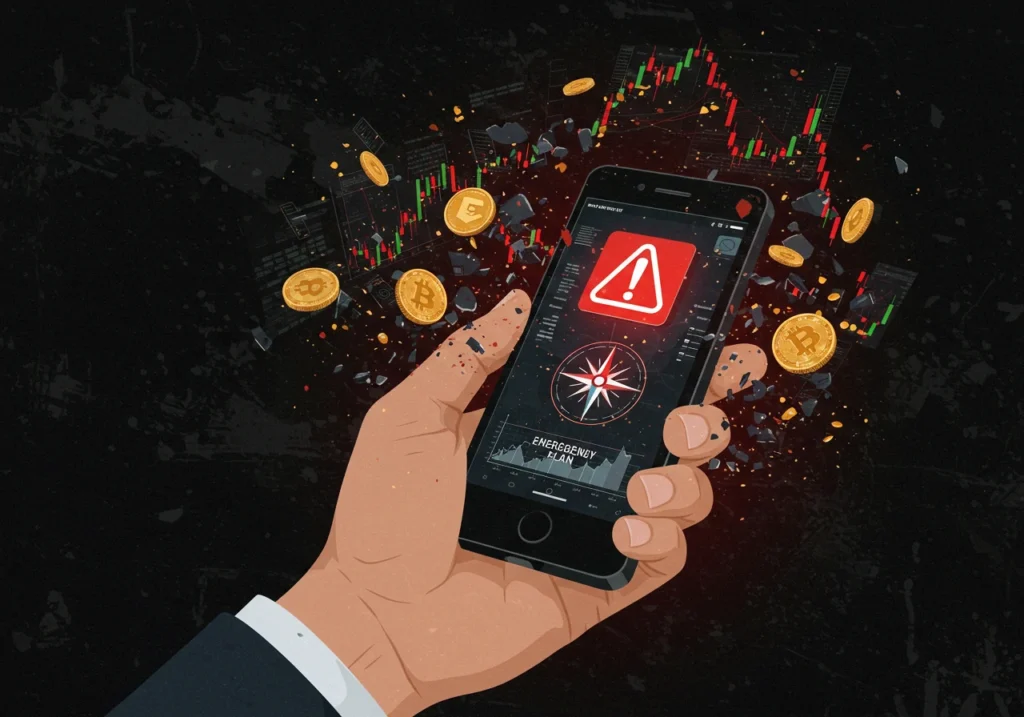
Write step-by-step instructions your emergency person can follow. Keep each step short. Use actions, not long explanations.
Example steps:
- Contact exchange support with MyID and explain I cannot access my wallet. (Provide account username.)
- Retrieve the hardware wallet from the safe (include safe location).
- Use the hardware wallet to transfer funds to an exchange account already approved (include exchange name and account info).
- If keys are lost, contact the attorney listed below with the transaction IDs and wallet info.
Test these steps with your emergency person. Make sure they can follow them without special knowledge. Training reduces panic and mistakes.
Use legal tools where appropriate
Depending on your country and holdings, you can add legal protections:
- Write a simple power of attorney for financial matters.
- Include crypto instructions in a will or trust. Make sure your attorney understands digital assets.
- Use a vault service that supports legal release of assets.
Legal documents can help, but they can also add complexity. Talk with a lawyer who knows crypto if your holdings are large.
Emergency communications and passwords
Set up a locked, emergency communication channel:
- Use an email account reserved for emergencies. Protect it with a strong password and MFA.
- Store contact numbers of your emergency team and relevant services (exchange support, lawyer) in an easily accessible place.
Write short email templates for use in emergencies so your team can send official messages quickly.
Plan for sudden loss of devices or accounts

Consider these scenarios and a short plan for each:
- Lost phone: Have backup codes and a secondary number for MFA.
- Compromised email: Move critical accounts to a new secured email and inform recovery contacts.
- Hardware failure: Use hardware wallets and backups on metal plates so failure does not matter.
- Death or incapacitation: Your emergency team uses legal documents and seed backups to access assets.
For each scenario, keep steps short and clear.
Test your emergency plan gently
Testing matters. A dry run with your trusted person shows holes and gives confidence. You do not need to transfer real funds. Walk through the inventory, locate the safe, and check that the person can find the listed files.
After the test, update the plan. Small fixes make big differences.
Protect privacy and limit exposure
Keep details on a need-to-know basis. The more people who know your keys, the greater the risk.
- Share only with chosen emergency persons.
- Use sealed envelopes or secured digital files accessed with multi-step verification.
- Avoid public mention of holdings or plans on social media.
Privacy keeps attackers guessing and gives you breathing room.
Simple technology choices that help
- Use hardware wallets from reputable brands.
- Use password managers for account info (not for storing seed phrases without encryption).
- Use a secondary, secure email for recovery and emergency contact.
- Use trusted vault services or bank safety deposit boxes for metal backups.
Choose reliable tools. They reduce decisions under stress.
Cryptocurrency risk management: small habits that matter
Good cryptocurrency risk management is mostly daily habits:
- Keep software updated.
- Use MFA on all accounts.
- Use unique passwords for each service.
- Move large holdings to cold storage (hardware wallet) rather than exchanges.
- Periodically review and update the emergency plan.
A little attention each month prevents big problems later.
Maintain and review regularly
Set a calendar reminder to review the plan every six months. Life changes: you may move, change devices, or update trusted contacts. Keep the plan current and test it occasionally.
Conclusion — small steps, big calm
Creating an Emergency Plan for your crypto assets is not about fear. It is about care. It means choosing safe storage solutions, deciding who can help, writing clear emergency response procedures, and testing them gently. Use secure storage solutions and keep legal and digital notes where trusted people can find them when needed. A little work now saves hours of panic later. Keep your plan simple, private, and updated. That way your crypto is safer, and your peace of mind grows.
Quick checklist
- Make a short crypto asset emergency plan document.
- Choose one or two trusted people and train them.
- Use multiple secure storage solutions (hardware, paper, metal).
- Write clear emergency response procedures with step-by-step actions.
- Consider legal tools for large holdings (POA, will, trust).
- Test the plan with a dry run.
- Keep backups off the cloud and encrypted if digital.
- Review the plan every six months as part of cryptocurrency risk management.
- Keep details private and share only on a need-to-know basis.
- Use hardware wallets and strong passwords for daily safety.
FAQ
Q: How much detail should I put in my emergency plan?
A: Keep it short and clear. Include who acts, where backups are, and the basic steps to retrieve funds. Avoid writing seed phrases in plain text in the plan.
Q: Can I rely on just a will to pass crypto to heirs?
A: A will helps, but it can be slow. Combine a will with practical backups and a trusted person who can act sooner if needed.
Q: Is one hardware wallet enough?
A: For many people, one hardware wallet plus a metal backup of the seed phrase is sufficient. For higher safety, use geographic separation for backups.
Q: What if I do not trust family members with this information?
A: Consider a professional fiduciary, a lawyer, or a trusted third-party service that can hold encrypted backups and release them under clear conditions.
Q: How often should I update my emergency plan?
A: At least every six months, or after major life changes (move, marriage, new devices, change of trusted persons).
Table of Contents

Hello, I’m Edmilson Dias, founder of CoinBringer. I created this platform to guide people through the fast-moving world of cryptocurrency with clarity and safety. With years of research in blockchain and digital security, my goal is to translate complex topics into practical knowledge, offering reliable tutorials, safety insights, and guidance for both newcomers and experienced users.
Discover more from CoinBringer
Subscribe to get the latest posts sent to your email.

